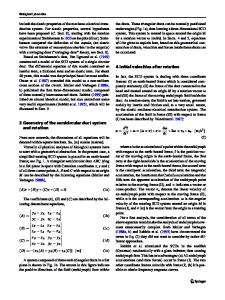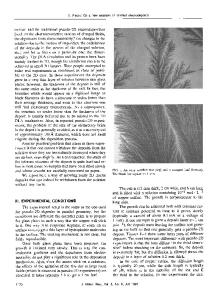Aspects of the Mechanical Properties of Electrodeposits
- PDF / 3,358,131 Bytes
- 12 Pages / 414.72 x 648 pts Page_size
- 24 Downloads / 370 Views
Mat. Res. Soc. Symp. Proc. Vol. 356 01995 Materials Research Society
Figure 1. Uncoalesced Three-Dimensional Crystallites
Figure 2. Pyramidal Shape of Three-Dimensional Crystallites
120
coalescence of three-dimensional crystallites. The coalescence involves the formation of dislocations which affect the mechanical properties. Three-dimensional crystallites, which had not yet coalesced when deposition ceased were also observed on the surfaces of relatively thick deposits (2). This observation indicated that the process of crystallite formation and coalescence is not limited to the initial layer. Stacking mistakes are often made during nucleation. These mistakes frequently occur on {111} planes of face-centered-cubic metals when atoms deposit in positions characteristic of a hexagonal-close-packed structure. The deposition rate is usually too rapid for a change of position before the next atom layer locks the fault in place. In this way neighboring nuclei are in a twin orientation. Growth twins are frequently observed in the structure of copper and nickel deposits. Twin boundaries can affect the mechanical properties. Foreign substances can be anisotropically adsorbed. Grains having a crystal plane parallel to the surface on which there is low adsorption, grow faster than others. The faster-growing grains can also spread sideways until they encounter others of the same orientation. In this way the slower-growing grains become covered. The deposits then consists essentially only of the faster-growing grains. When the surface of the deposit consists primarily of grains of a particular orientation, a fiber texture exists. The cross section of the deposits then exhibits a columnar-grain structure. A fiber texture primarily affects the mechanical properties of noncubic metals such as those with a hexagonal structure. When there is only one slip plane, which for hexagonal-close-packed metals is the basal one and it is either mostly parallel or perpendicular to the surface, slip cannot take place. The deposit then appears to be brittle (3). Electrodeposited alloys are frequently supersaturated solid solutions. Nickel-phosphorus alloys, for example, may contain as much as 12% by weight of the alloying element. Under equilibrium conditions, phosphorus is essentially insoluble in nickel at room temperature. The high-phosphorus alloys are amorphous and thus have some of the properties of metal glasses (4) TESTING METHODS The two most often used methods for determining the mechanical properties of electrodeposits are the bulge and the uniaxial tensile test. For bulge testing, a circular disk cut out of the deposit is clamped over a cavity which is subsequently filled with pressurized oil or gas. The stress is applied by the fluid pressure; the strain is determined from the bulge height. If the standard ASTM (5) sheet specimen is used for uniaxial tensile testing, the width-to thickness ratio is too high. Then the center portion has been found to stretch more than the edges (6). For this reason thin-foil specimens with more
Data Loading...











